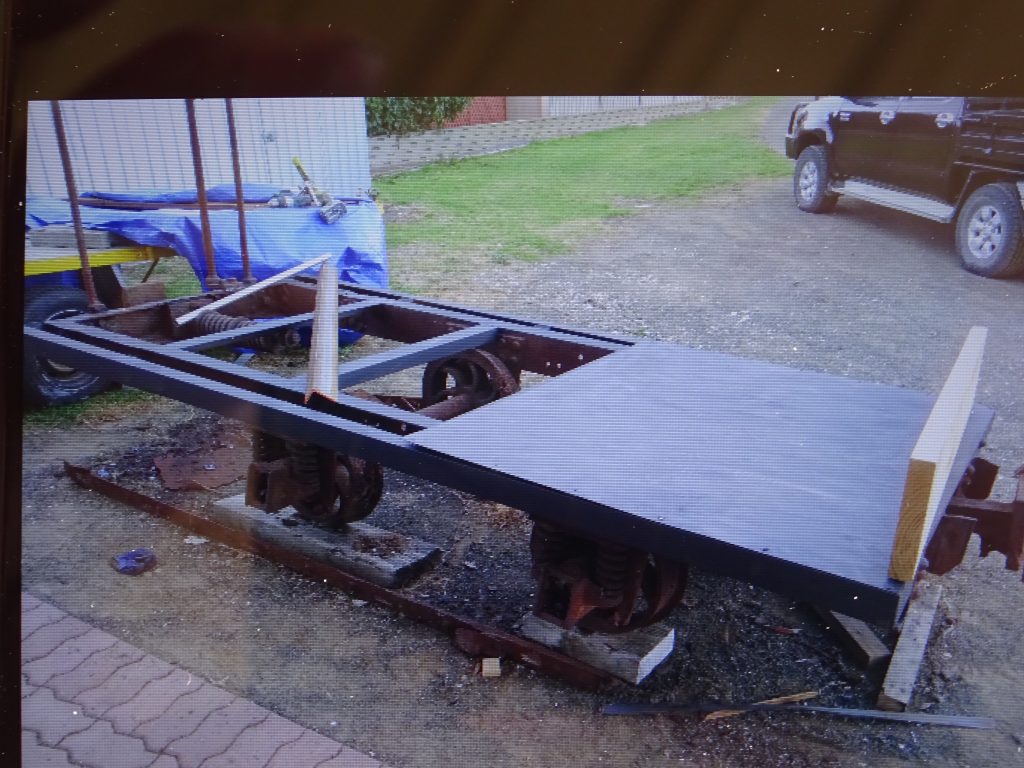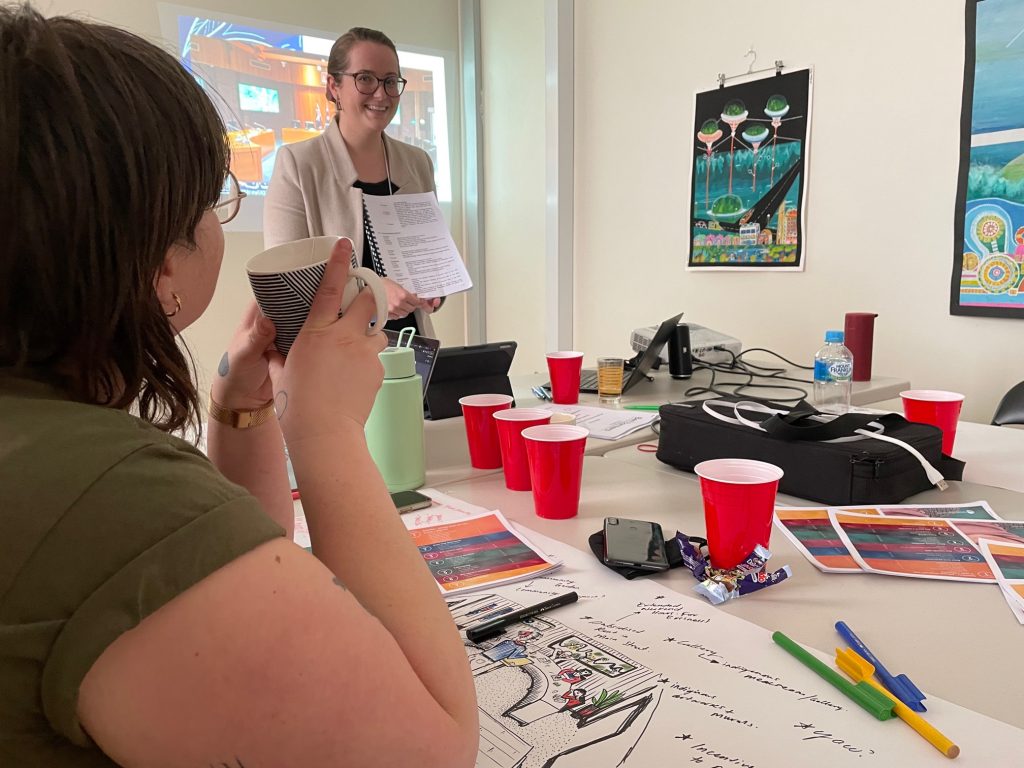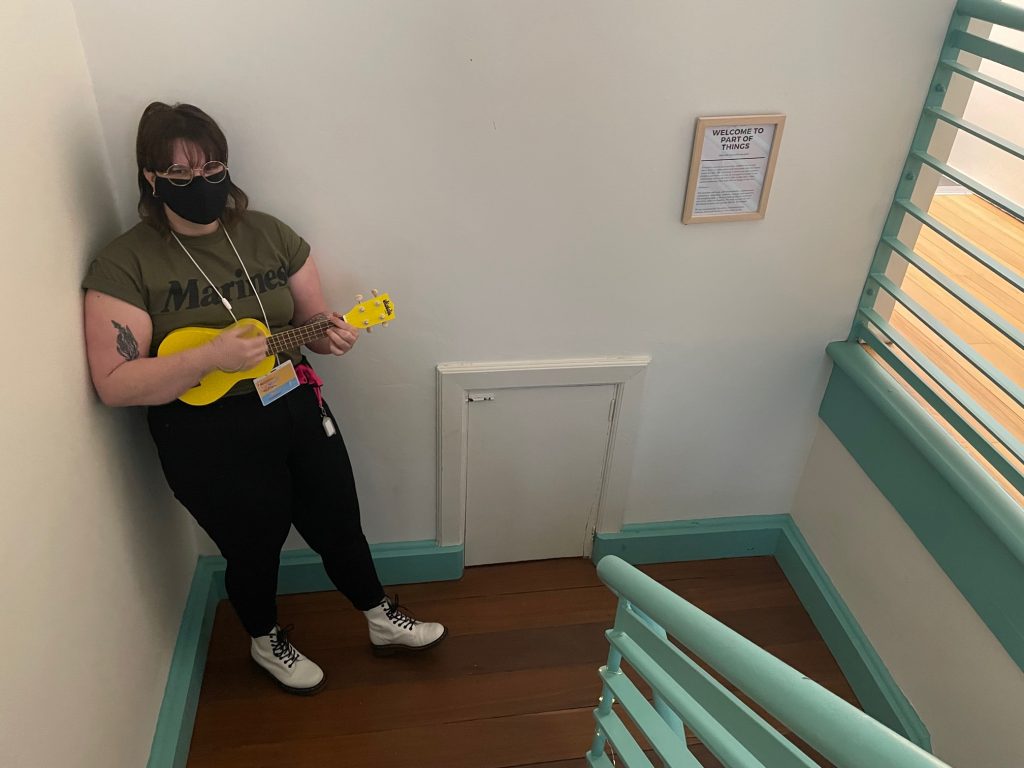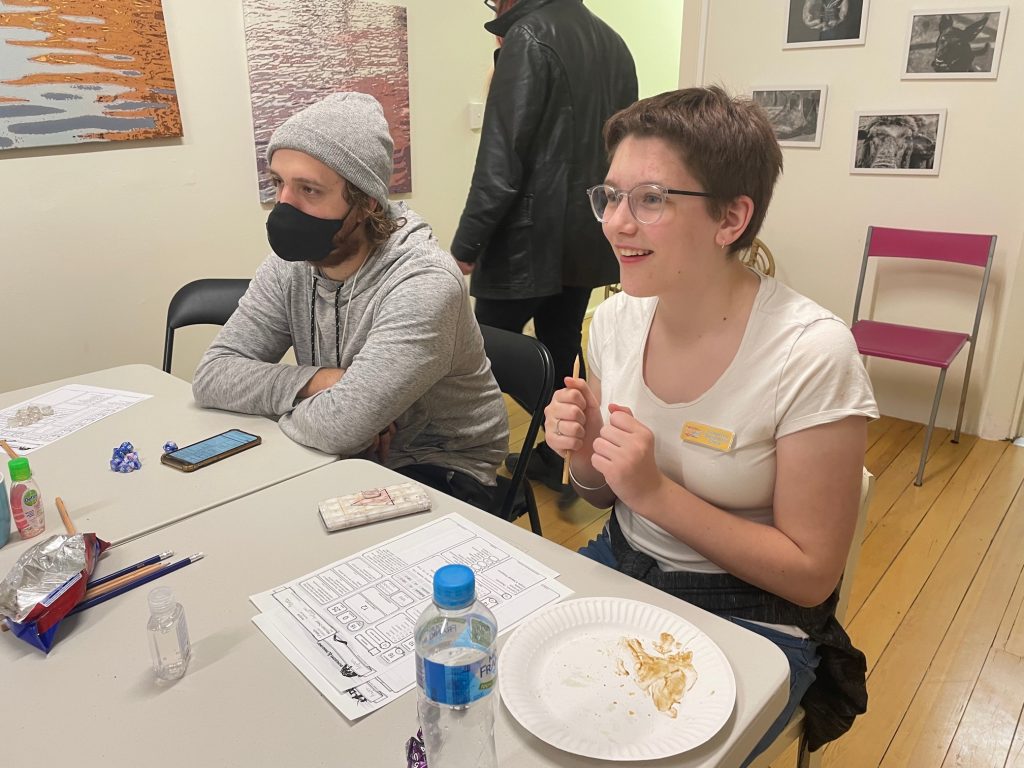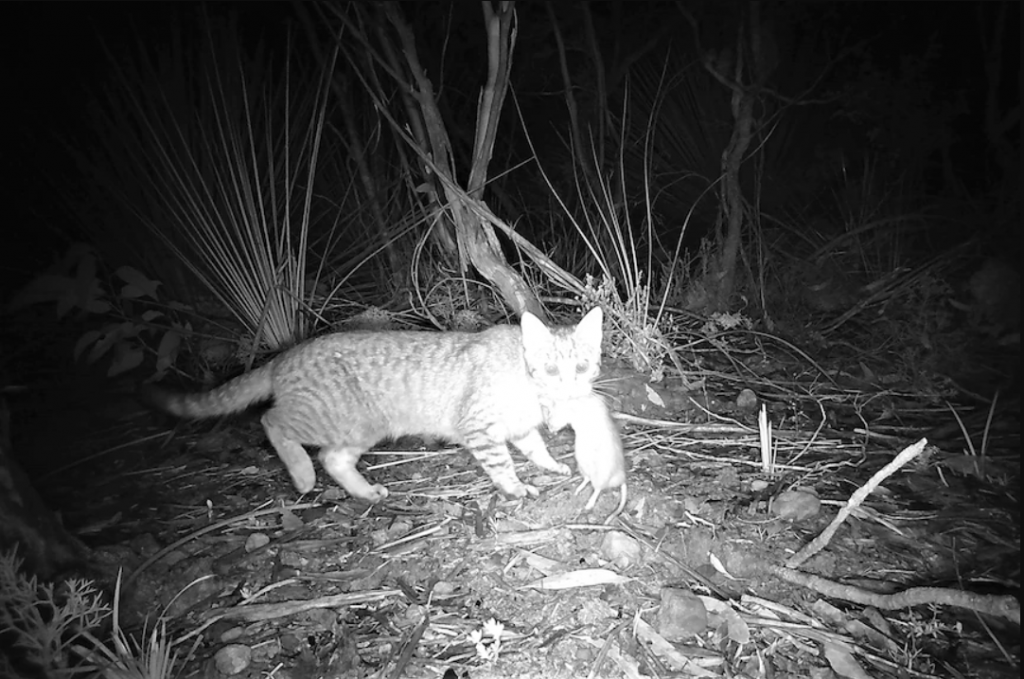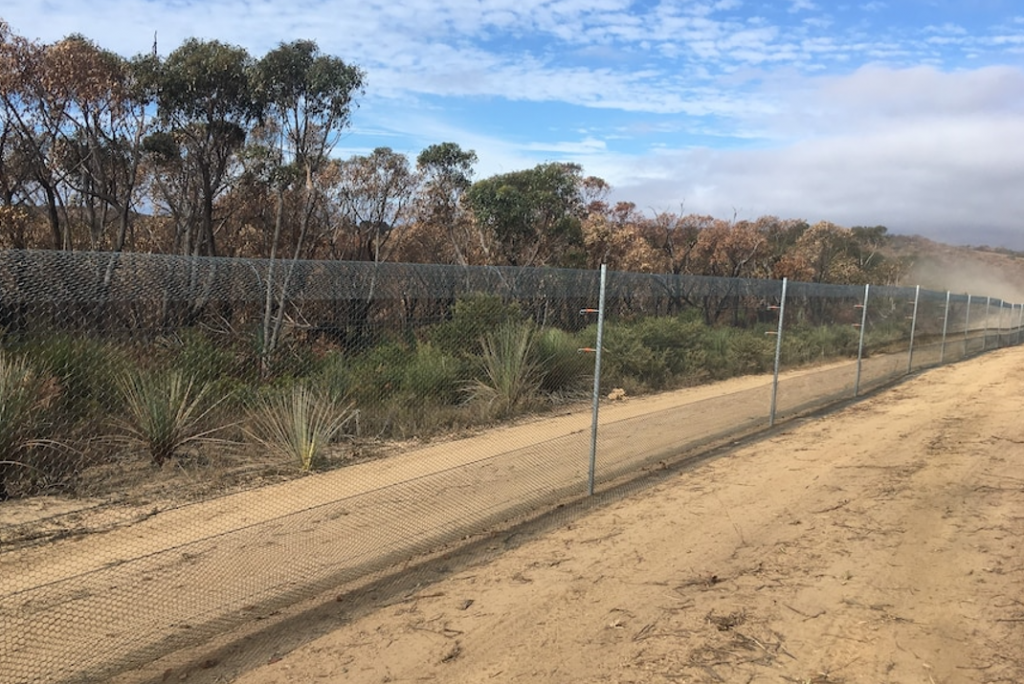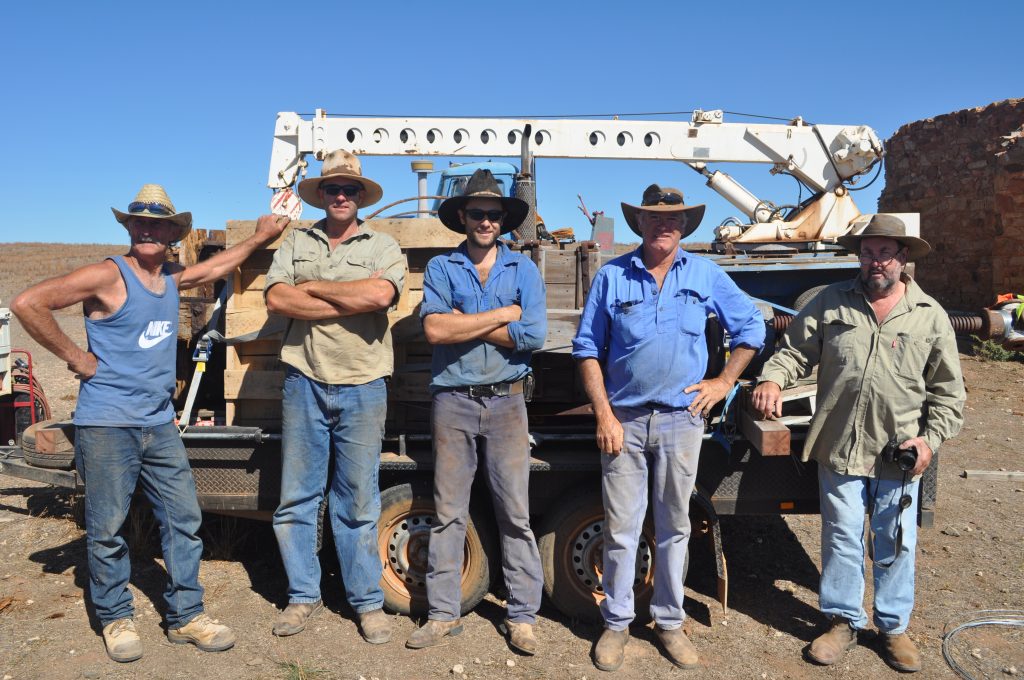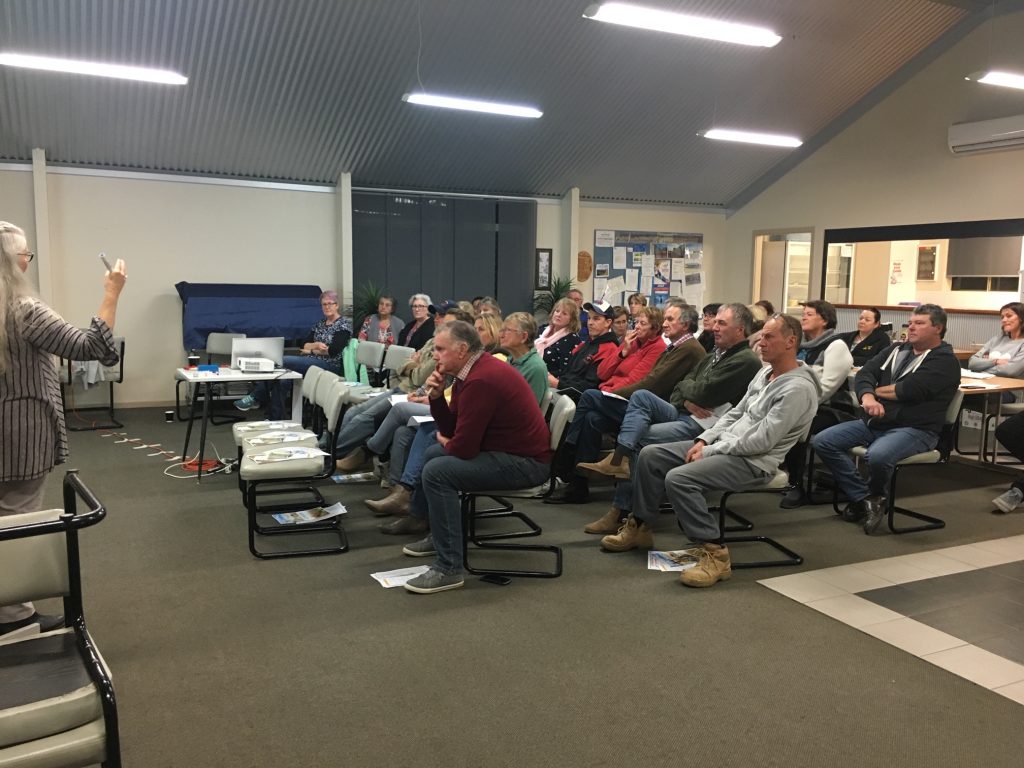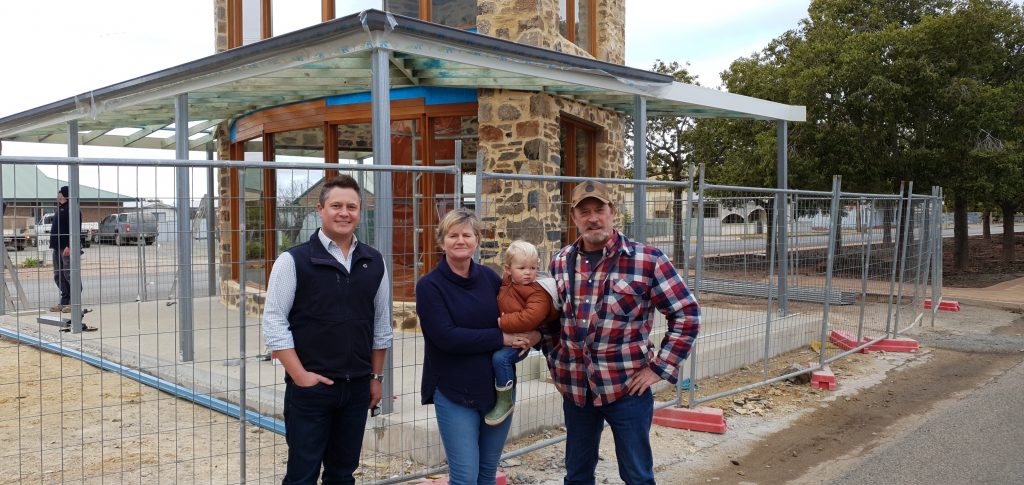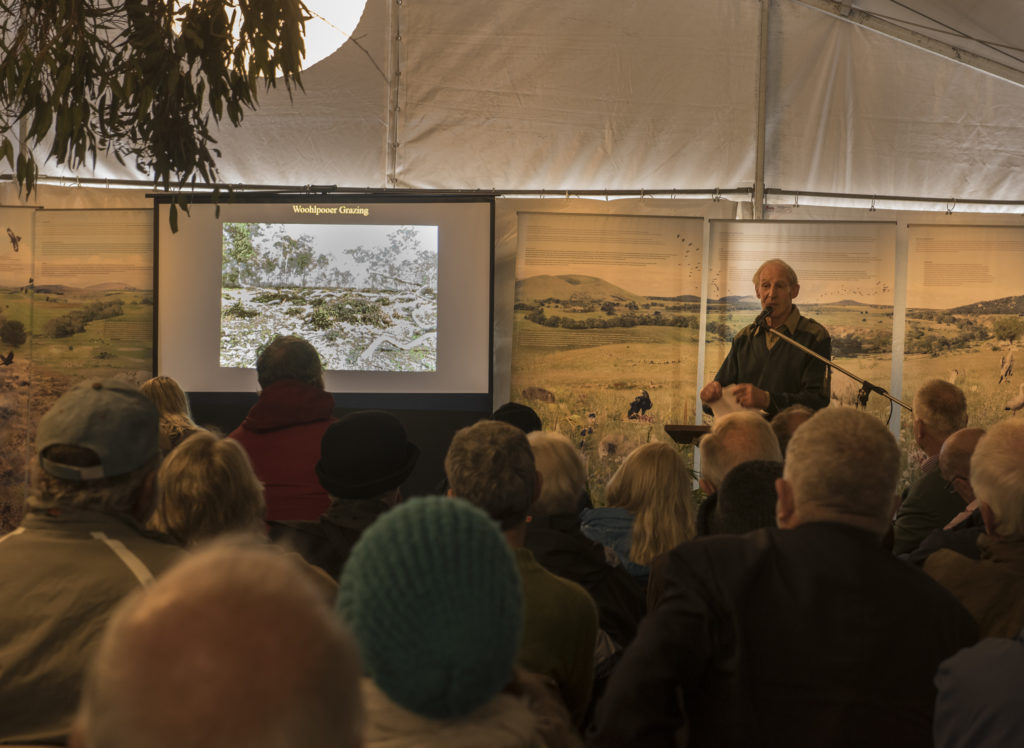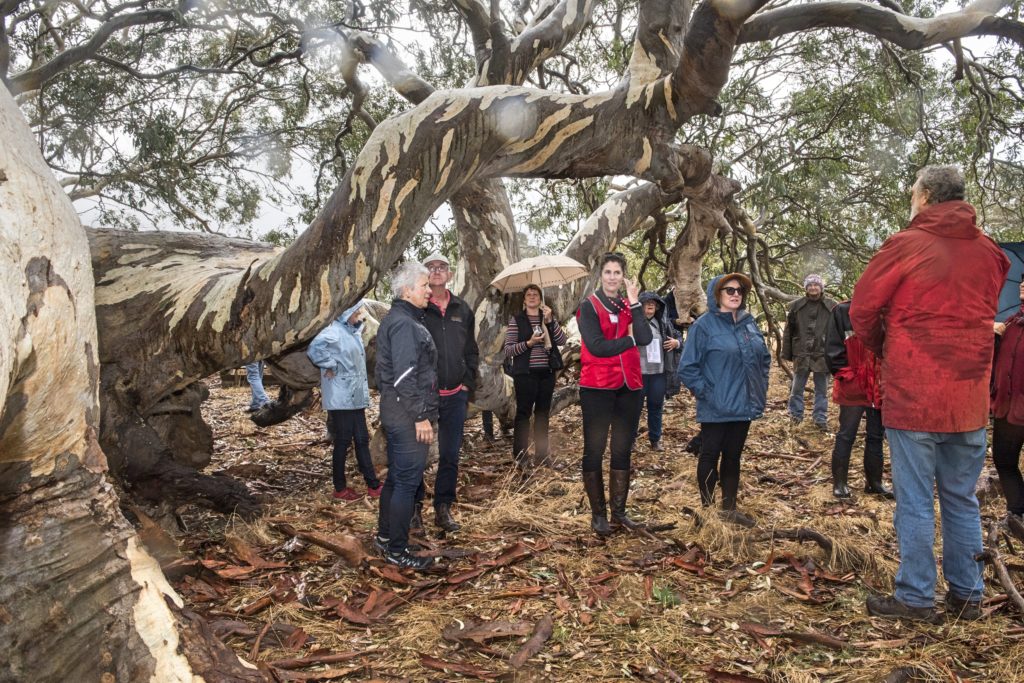Foundation for Rural & Regional Renewal (FRRR)
In the last few years, bushfires, floods and other extreme weather events have become more common in parts of Australia. In South Australia, people living in metropolitan and remote, rural and regional areas have become more accustomed with these types of events hitting their communities. Preparation and planning is key to ensuring minimal damage to human life and infrastructure. But for people living with a disability preparedness can sometimes be tricky – especially if important messaging isn’t accessible.
As of 2015, there were nearly 200,000 people in South Australia living with deafness or hearing loss (2015 National Health Survey, ABS). In times of emergency when clear communication is vital, there is a large window for confusion when first responders are unable to communicate with residents in disaster-affected areas. To close this gap, Deaf Can:Do developed the Talking Hands for Frontline Responders project.
Using a $25,000 grant through the FRRR News Corp Bushfire Fund program, the aim of the project was to provide training to South Australian Country Fire Service (SA CFS) volunteers across the state to effectively communicate with the deaf and hard of hearing community by teaching them basic AUSLAN skills and other ways to communicate.
Unfortunately, COVID and an active fire season meant SA CFS had reduced capacity to help co-design the learning content. With permission from FRRR, Deaf Can:Do redirected a portion of funding to purchase a Learning Management System authoring tool. Staff were upskilled in the use of this tool, so that learning design and course builds could be completed internally. The tool allowed for the sharing of content and proposed course materials via a simple link that updated in real-time, which led to ease of communication around changes required, and ultimately supported tailoring content for the target audience. The co-design process greatly benefited from this. The course was finalised internally at Deaf Can:Do, and then exported into CFS’s own learning management system with their support.
During the consultation and content development period, the CFS identified that volunteers would benefit from communication skills and strategies training as well as Auslan language training, so the scope of content was broadened to include this identified need. CFS also provided feedback around specific needs of volunteers, English literacy considerations and accessibility to information.
As a result, the seven module course introduces learners to some simple Auslan that has been tailored to the needs of the CFS, and covers which skills and strategies are most appropriate for different community members, as well as some common mistakes to avoid. The training includes Auslan videos, interactive quizzes, interactive simulations and more to guide learners through the course, as well as links to further resources.
The e-learning course now features on the CFS’s learning management system, and is available to all volunteers across the service. The training, which can be completed at any time, provides basic but important skills that allow CFS volunteers to successfully communicate relevant and important information to the deaf and hard of hearing community. This successful project will have several positive impacts on South Australian communities in times of disasters. Volunteers can now confidently communicate to people living with hearing impairments, and it will also build relationships between these community groups and help spread useful information to other people. The program can also be rolled out to CFS groups across the country which will play a major role in disaster preparedness nationally.
Feedback was collected from the volunteers who participated via a survey link embedded in the course. The response was a strong “Very Useful”, while others felt that the practical advice like using a mobile phone to write was very helpful too.
For more inspiring stories like this, head to our FY 2021/22 Annual Review.

The restoration of an historic jetty trolley has had unexpected benefits for men’s shed and community members on Kangaroo Island. The trolley was first used in the 1840s to transport basalt along the jetty onto waiting ships. The Kingscote Men’s Shed restoration project has seen the revival of rare trade skills using tools that were used 100 years ago to make the trolley, and the formation of new connections in the community.
The Men’s Shed received a $3,683 Strengthening Rural Communities grant, funded by the Waislitz Family Foundation, in partnership with Australian Community Media, to support recovery from the 2019/20 bushfires that devastated much of Kangaroo Island. This project is one of many FRRR supported across the island to strengthen community connection and support recovery activities.
Graeme Connell, Chair of the Kingscote Men’s Shed said, “The Kingscote Men’s Shed volunteers are very proud of their achievement to restore a 100-year-old jetty trolley and preserve the history of these trolleys that were used on jetties around Kangaroo Island. The older members of the Men’s Shed were able to share their knowledge about the skills and tools used in the old ways of construction of steel products with the younger members.”
The group used social media to stimulate interest and encourage new volunteers. New skills and friendships were formed between Men’s Shed members and community volunteers working together on this historic project, which included a local secondary student. Many passers-by were keen to see the restoration in progress, with a cup of tea at the ready for anyone interested in learning more or just having a chat.
The newly restored trolley sits proudly at the Pioneer Memorial Park as a monument both to past activities that forged the town, and as a marker of recovery. It has already become a favourite destination with local visitors and community members, particularly given its location overlooking the old wharf and beautiful coastline.
The Men’s Shed has well and truly achieved its goal of delivering a shared community project to create “meaningful interactions”. The sense of achievement and confidence from the project, and the camaraderie that has come from it has boosted mental health and wellbeing, which will have lasting impact on the group and wider community.
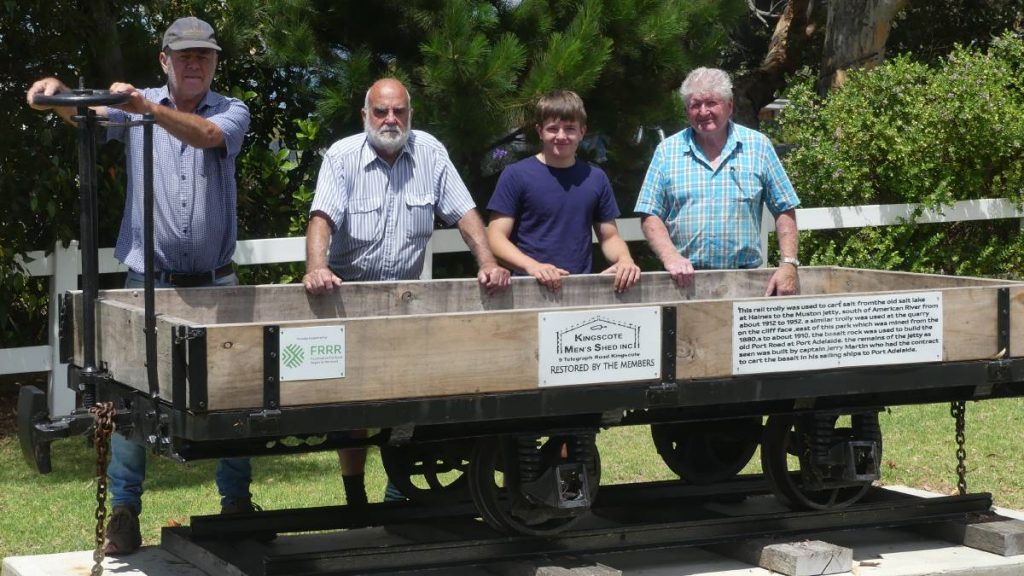
Picture this: the year is 1919 and you’re standing on the white sandy beach of Lucky Bay on the Eyre Peninsula coast in South Australia, looking up at the first beach shack to be built on the beach. The sun is warm, the water is perfect, and Lucky Bay is the idyllic holiday spot for the surrounding communities of Cowell, Kimba and Cleve.
Now in the 21st century, there are 125 beach shacks, and families from all around still come to visit the Bay!
The Lucky Bay Shack Owners Association (LBSOA) was established in 1950, and its role is to improve the environment and lifestyle of the Lucky Bay settlement for all residents and visitors to enjoy. This includes making sure the beach and local facilities are ship shape and ready to go for incoming holiday makers who are able to rent the beach shacks, as well as local fishermen and caravanners who use the facilities.
With an active role in the community, LBSOA wanted to do something that would bring some joy and a smile to the faces of the visitors to their little town. After prolonged drought, many locals were finding that holidaying with the family was simply a luxury not afforded, especially with livestock to attend to. But Lucky Bay is only 15 km north of Cowell, which makes it a perfect location for farming families to escape to, while still being able to tend to their farms.
Safe play = laughing children and happy parents
LBSOA sought funding from FRRR through the Tackling Tough Times Together (TTTT) program to support their ‘Laughter at Lucky Bay’ project, which would see a three staged plan to make the holiday destination more enticing by developing a child safe playground and surrounding facilities for parents and adults to enjoy.
Funded by the Australian Government, LBSOA received a $51,597 TTTT grant towards stage one of the plan: the purchase of new playground equipment, shade structures, soft fall sand, and fencing.
LBSOA’s President Sue Chase said they were overwhelmed by the community response, once they saw the works underway.
“What we were most astounded by is people’s enthusiasm to participate in working bees, and I think this stemmed from them seeing the playground come to life. Many people in the community provided their time to get the playground up and running. We are also proud of the funds we have raised. Our first ambition was to raise enough funds to contribute our share to the ‘Laughter at Lucky Bay’ playground project. However, we were amazed at the success of our fundraising, which, together with the other grants we received, allowed us to construct a shelter and install a BBQ shed and storage area near the playground,” she said.
The official opening of the playground in January 2021 was attended by hundreds of people who enjoyed the food stalls, jumping pillow, face painting and crab racing activities on offer.
These events not only raised vital funds to support the upkeep of the facilities, but also reinforced a real sense of community participation, lots of fun and helped people get to know one another better.
When asked what they were most proud of, LBSOA said the sheer number of children and even teenagers taking full advantage of the new playground made them so pleased. Extra facilities like a table and chairs and the BBQ have also encouraged parents and adults to spend time together and socialise, giving them a break from the ongoing pressures and stressors that drought can bring.
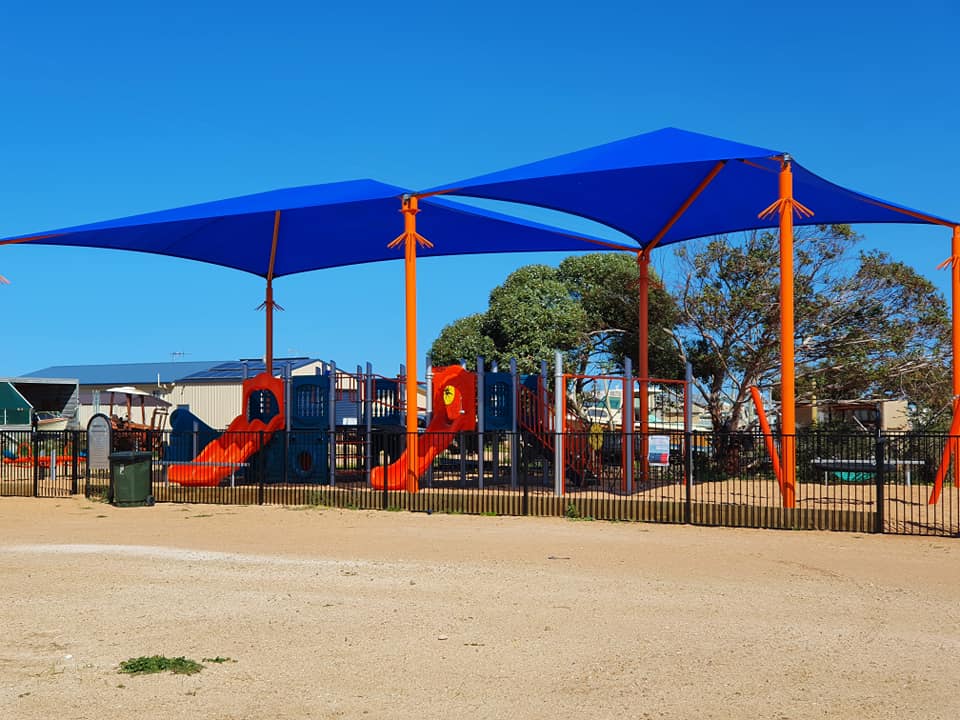
Located on the Eyre Peninsula is the town of Port Lincoln in South Australia. This is the home of essential organisations like Yarredi Services, whose purpose is to create a space where those who need assistance can receive it.

Yarredi Services works hard to support local women and children who are victims of domestic and family violence (DFV). Working in collaboration with the South Australian Police, local health services, Aboriginal health services and other not-for-profit agencies, Yarredi focuses on a diverse range of ways to address the needs of the people affected by DFV.
Founded in 1979, Yarredi Services currently works out of a centre that provides resources for their clients to take control of their own lives; the “Women’s Wellbeing and Safety Hub”. In partnership with ANZ, FRRR awarded Yarredi Services $5,184 through the Seeds of Renewal program, to fund the purchase of a range of laptops and office equipment to be used by clients.
The laptops at the centre will be in a safe environment where women and children can study, work, find housing and any other services they may need to access online. The benefit of using the laptops at the facility ensures a level of safety and privacy. According to Executive Officer Sharyn Potts, while access to technology can be empowering, it can also come with risks.“
Technology can be used to abuse or track individuals. It’s important our clients have access to computers and technology in an environment that’s supportive and informative. We want them to be able to put resumes together and manage their banking while learning information about how to avoid being tracked.”
Adapted from an article published by ANZ.
Part of Things is a gathering place and ideas hub for young people in Barmera in the Riverland region of South Australia. They used a $10,000 FRRR ABC Heywire Youth Innovation Grant to adopt and adapt their own version of the Skillin’ It project idea that was developed at the 2020 Heywire Regional Youth Summit.
Riverland Skillin’ It was a 12-month project that brought together a leadership ‘squad’ of four local young people from across the Renmark Paringa, Loxton Waikerie and Berri Barmera local government areas to create a series of online and live workshops aimed at inspiring, connecting and upskilling young people.
Despite being impacted by the uncertainties of COVID, including a full lockdown in June 2021, the project culminated in the Skillin’ It squad members curating and delivering Symposium – a two-day festival in September 2021 for local young people aged 18 to 26. Held in Barmera, Symposium featured in-person workshops to support participants develop small business, creative and life skills, while also encouraging knowledge sharing between individuals and community members.
Across the life of the project, the Skillin’ It squad and festival presenters were actively mentored and supported by Part of Things founder and project mentor, Alysha Herrmann, who is an award-winning producer, youth arts worker and ‘doer’ who has been delivering community, arts and youth projects of varying scale across regional South Australia for over ten years.
Kelsey Hogan from the Barmera District War Memorial Community Centre, which auspiced the application on behalf of Part of Things, said Riverland Skillin’ It was instrumental in providing a dedicated project with intensive and tailored mentoring for local young people to connect with each other and their community.
“Young people are under-represented in leadership and decision making across the Riverland. This project has developed positive relationships between young adults and their community and provided a safe space for people to connect, develop confidence, try something new and community build,” Ms Hogan said.
“We can’t plug all the gaps and overcome the challenges our region presents for young people. However, what we have done with Riverland Skillin’ It, is invest in a core group of local young people to ensure that they were able to successfully deliver a project for their community and now feel inspired, supported and ready to make greater things happen for themselves and others.”
Together they were able to leverage the success of the Heywire grant to partner with all three Riverland councils, and attracted an additional $22,100 of funding. This increased the resources available for the project and added additional paid opportunities for the young people who participated, and also removed fees for participants to attend the final festival workshop weekend.
A legacy of the project is The Knowledge Hub, an online resource housed on the Part of Things website that features downloadable resources, curated links, blog posts and other content, which exists to share and build ideas, skills and knowledge across a range of genres, disciplines and interest areas.
Just off the South Australian mainland you will find Kangaroo Island (KI). Australia’s third largest Island, KI is known for its stunning nature reserves and wildlife. During the 2019/20 bushfires, the flora and fauna of KI was severely impacted. Around 210,000 ha was burned, which destroyed numerous bushland patches of reserves and private property. The true damage of what this has done to the environment and its habitats is still being determined; it may take years to properly understand the impacts.
With this in mind, all remaining vegetation across KI is now considered to be highly important for conservation. Protecting the wildlife that live within these bushland areas is a high priority to organisations like the Nature Foundation. Their vision is to inspire people to connect with and conserve the natural habitat of South Australia for future generations. The Nature Foundation is involved in a number of projects that educate the broader community, provides scientific research and raises funds and awareness for their conservation work.
One of their more recent and ongoing projects is completely eradicating feral cats from Dudley Peninsula, which is located on the eastern side of the Island. Conservationists report that the feral cats living on KI are preying on small animals and birds that are already under threat from the mass loss to their habitat after the bushfires. They are also known carriers of parasitic diseases (Sarcosporidiosis and Toxoplasmosis), which have caused economic impacts on the island’s primary producers. These diseases are known to affect sheep across the island.
To help reduce the numbers of feral cats, the Nature Foundation received a $25,000 Strengthening Rural Communities (SRC) grant, which was funded by the Fire Fight Australia Fund from donations received during the concert for national bushfire relief in February 2020. The SRC grant was used to purchase and install equipment needed to monitor the cat numbers and their movements around the peninsula. The Nature Foundation has built a cat proof fence that separates the peninsula from the remainder of the Island. They made sure to include gaps in the fence so other wildlife like Kangaroos can get through to the other side. The cameras were installed at the fence breaks to monitor the effect of the fences and to determine the best way to control feral cat numbers.
Since installing the fence and the cameras, it has been reported that numbers and diversity of species within the enclosed area have almost doubled. As reported by the ABC, the current traps set up along the fence are proving to be extremely successful in reducing the number of feral cats to the area.
Ngadjuri Country
The small agricultural township of Orroroo in South Australia knows what it’s like to suffer through drought. With several local businesses closing down and the community running the taxing gamut of drought-related issues, something different needed to be done.
Fortunately, this small outer regional area has a dedicated group of people who are behind the push to ensure the town’s survival, by celebrating and showcasing Australia’s pioneering agricultural history. In the past, the area has relied heavily on a thriving agricultural foundation, but they saw the need to improve their economic diversity, starting with a new tourist attraction.
Over the past few years, the District Council of Orroroo Carrieton, the Orroroo Regional Tourism Group and a team of amazing volunteers have dedicated themselves to very carefully restoring the locally-famed Black Rock Woolpress – a generously donated, circa 1850s piece of manual machinery, which early research suggests may very well be the only one of its kind left in existence.
Plans for the impressive woolpress to be showcased in its very own building in the main precinct of Orroroo came a step closer to reality, thanks to a $20,000 grant from FRRR’s Tackling Tough Times Together program, funded by the Australian Government.
The grant allowed for a formal business plan to be drawn up by a local consultant, confirming the feasibility of the Heritage Hub project. The plan required input from all areas of the community – those working on the project directly, as well as in the wider community motivated to create an attractive tourist destination. As well, the funds were put towards the planning, architectural drawings and raw materials needed to construct the purpose-built rotunda for the Black Rock Woolpress.
This seed funding enabled the planning committee to produce a proof of concept, which attracted $143,252 in further funding from FRRR’s Tackling Tough Times Together program, again funded by the Australian Government, along with grants from the Australian Government’s Local Roads and Community Infrastructure program and funding from the local Council.The stone and glass rotunda now houses the historic woolpress (circa 1851) as the centrepiece in a collection of heritage items on display as part of a landscaped Heritage trail in the town’s centre, with impressive interpretive signage, maps and promotional material. The FRRR grant also contributed to the official launch of the development, which recognise the generous funding organisations and the thousands of hours of volunteer involvement in restoring the woolpress.
District Council of Orroroo Carrieton community project officer Jodie Boully said “We have already had so many locals and visitors stop to comment how impressive the building is.
“It’s been such a huge success to date, a great story of local volunteers who have remained involved in the planning right the way through to highlight some of our early pioneer history.”
The project to create such an attractive tourist destination has already created strong bonds, with those in the community dedicated to seeing the town succeed despite the drought. They have self-funded, committed hundreds of hours of volunteered hours, and worked tirelessly together from the very beginning developing not only the beginnings of a beautifully built tourist hub, but a sustainable and diverse economic platform for the town to rebuild from.

When Steven Noble lost his life in a road crash at Mt Gambier on Easter Sunday in 2013, aged 27, it devastated the Limestone Coast community and stripped his wife, Courtney of their future together. In the lead up to the fifth anniversary of his passing, Courtney and a team of passionate mates have brought a vision to reality, with the delivery of a community bus in honour of Steven and all that he stood for.
Steven was a well-respected member of the Port MacDonnell and Allendale East community, growing up on a family Dairy Farm in Allendale East and attending Allendale East Area School during his schooling years. Small communities create close relationships, and Steven is remembered in the Port MacDonnell and Allendale East community as a friendly, outgoing, loyal and caring person who always put others before himself and had a smile that would light up the room. A talented sportsman, Steven was a successful senior footballer with the Port MacDonnell Football club. Sadly missing out on his 150th game by only two games, Steven played football for the Port MacDonnell Football Club from junior level right through to being the Premiership Captain of the PMFC team in 2012. Steven’s father Chris was well also respected in the Kongorong community, playing for the Kongorong Football Club for many years.
The Steven Noble Memorial Sub Fund was established in Steven’s memory by a group of three friends who participated in Swinging with the Stars in 2013 and wanted to do something in his honour. With Courtney’s consent and support, Simon Livingston, Tahlia Gabrielli and Amy Trevilyn established a Sub Fund to honour Steven’s memory, with the aim of supporting the local communities of Port MacDonnell, Allendale East and Kongorong. The Sub Fund represented what Steven was as a person, someone who was always willing to give everything he had to assist and support other people.
“When Steve passed, I thought we had to do something that not only remembered him but also helped those who were struggling with his loss. I was really drawn to how Stand Like Stone had set up their trust funds and realised that we didn’t have one for our area. Courtney was behind Tahlia, Amy and myself from day one, which really got us going with our fundraising. To actually see Courtney’s vision come to fruition is amazing,” said Simon Livingstone, who initiated the Steven Noble Memorial Sub Fund.
The vision became a reality in 2018, with the delivery of a community bus to service the extended communities of Port MacDonnell, Allendale and Kongorong, for the charitable purposes of education, awareness and accessibility for rural and regional communities. Although outside of Stand Like Stone’s normal operations, the Board agreed to this unique outcome and supported the wishes of those involved to enable the capital raised to be applied for this purpose. The project was supported through the Foundation for Rural and Regional Renewal who allowed the funds to be flowed out of the Stand Like Stone Public Fund to assist with the purchase of the community bus.
The community bus will be housed at the Allendale East Area School and will be available for community use for charitable purposes as identified. The bus will be managed under the governance of the School Governing Council and a community bus management committee. The community bus is dedicated to the memory of Steven John Noble (8/12/1985 – 1/4/2013). The purchase of the bus was enabled by Courtney Fox, Simon Livingston, Tahlia Gabrielli, Amy Trevilyan, Alisha Stephens, David Fox and Grant Fensom and supported by Noel Barr Toyota.
For centuries, red gums have dotted the landscape in south-west Victoria and south-eastern South Australia. A few community members from the small town of Cavendish in south-west Victoria understand the importance of these trees to the local natural environment. But they wanted to share their passion more widely and put the spotlight on these fantastic trees.
A creative approach
In 2017, this small group set up the Red Gum Festival Development Group Incorporated (RGFDG). One of their first projects was an arts festival, designed to explore and celebrate all aspects of the red gum species and hopefully, increase community understanding and willingness to protect the local environment. They also hoped that it would help to attract more tourists who already come to see the famous trees, and in turn support the local economy.
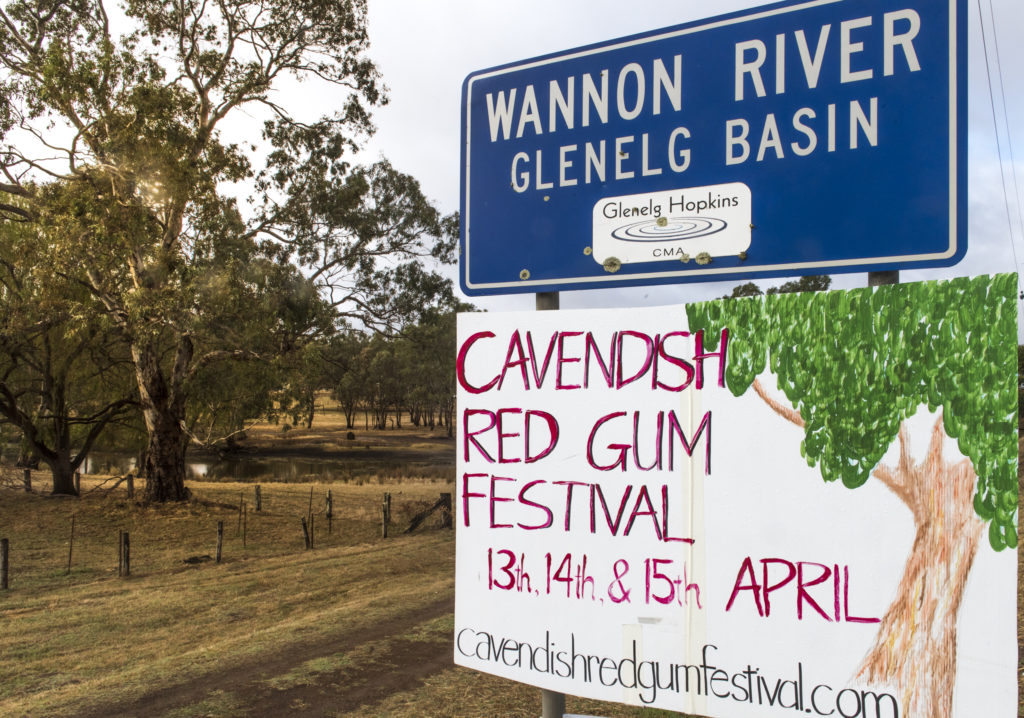
A $3,410 grant from FRRR was the initial funding for the inaugural Cavendish Red Gum Festival.
A committee of 12 and a team of 57 volunteers launched the inaugural Festival in April 2018. They worked hard to establish strong relationships with numerous local groups, including the Cavendish Recreation Reserve Committee, primary school, Lions Club and Men’s Shed, to ensure the project had extensive support.
To spread the word and build momentum in the lead up to the Festival, the RGFDG hosted sculpture, photography and writing competitions, with winners announced during the Festival. On the day, there was a wide range of activities, including markets, food stalls, exhibitions of wood-turning and musical performances.
Other core elements of the Festival were the science-based exhibits and a symposium featuring experts in forestry, conservation and tree science, and a bus tour of notable tree specimens and new plantations. These contributed to a document that is being shared with local Landcare groups, farmers and other interested parties to help preserve the trees. There is also a plan to generate a map of red gums, as a way of monitoring their size and health.
Sustainable solution
A second festival is planned for 2020, and it’s hoped it will become a regular community celebration. The growth of this arts festival has the potential to build community pride, attract tourists and significantly contribute to the local economy. Plus, by raising awareness of the importance of the trees and knowledge of their needs, the community, including landowners, will be better positioned to care for and protect them.
Art drew the crowd, and data and awareness will preserve the red gums. The Red Gum Festival was chosen to participate in the Art Resides Here project as the community is using the appeal of arts and cultural activities to raise awareness about the local environment.
They will tell their story at Artlands Victoria in Castlemaine and Bendigo in October 2018.



